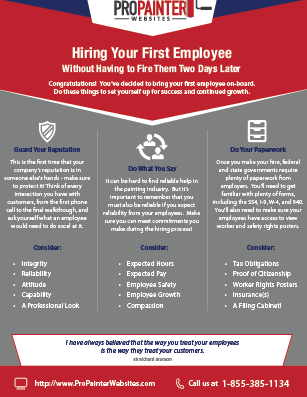Check Out The Influence Of Seasonal Aspects On The Performance Of Commercial Exterior Painting And Recognize The Optimal Times To Achieve Enduring Results For Your Project
Check Out The Influence Of Seasonal Aspects On The Performance Of Commercial Exterior Painting And Recognize The Optimal Times To Achieve Enduring Results For Your Project
Blog Article
Short Article Composed By-Regan Browne
When you're planning a business outside paint job, seasonal variables can make or break your results. You'll wish to think about how temperature and moisture impact paint application and drying times. Selecting Suggested Website can ensure your paint adheres effectively and lasts longer. However which seasons are genuinely the best for this kind of work? Let's explore the crucial elements that can affect your job's success.
The Impact of Temperature on Paint Application
When you're planning an industrial outside painting job, the temperature can considerably influence how well the paint sticks and dries out.
Preferably, you wish to paint when temperature levels range between 50 ° F and 85 ° F. If straight line construction 's also cold, the paint may not heal properly, leading to issues like peeling off or splitting.
On the flip side, if it's also warm, the paint can dry also swiftly, stopping correct bond and leading to an unequal surface.
You ought to additionally consider the moment of day; early morning or late afternoon supplies cooler temperatures, which can be much more positive.
Always inspect the maker's suggestions for the certain paint you're using, as they typically offer assistance on the ideal temperature variety for optimal outcomes.
Moisture and Its Result on Drying Times
Temperature isn't the only environmental element that influences your industrial outside painting job; moisture plays a significant function also. commercial painter plymouth can slow down drying out times considerably, impacting the overall top quality of your paint work.
When the air is filled with moisture, the paint takes longer to cure, which can lead to issues like inadequate attachment and a higher threat of mold growth. If you're repainting on a specifically humid day, be planned for prolonged delay times between layers.
It's critical to monitor neighborhood weather and plan as necessary. Preferably, go for moisture levels between 40% and 70% for ideal drying out.
Maintaining these factors in mind ensures your task remains on track and provides a lasting finish.
Best Seasons for Commercial Exterior Painting Projects
What's the most effective season for your business exterior painting tasks?
Springtime and very early loss are commonly your best bets. Throughout these seasons, temperature levels are moderate, and moisture degrees are usually lower, producing suitable problems for paint application and drying.
Stay clear of summer season's intense heat, which can create paint to dry also rapidly, causing poor attachment and coating. In a similar way, winter months's cold temperature levels can hinder correct drying out and treating, risking the longevity of your paint work.
Go for days with temperatures in between 50 ° F and 85 ° F for ideal outcomes. Bear in mind to examine the neighborhood weather forecast for rainfall, as wet problems can spoil your job.
Planning around these factors ensures your painting task runs smoothly and lasts longer.
Conclusion
Finally, intending your commercial external painting jobs around seasonal factors to consider can make a significant difference in the outcome. By organizing work during the suitable temperatures and moisture degrees, you'll ensure far better attachment and drying times. Remember to watch on local weather report and select the right time of year-- springtime and very early autumn are your best choices. Taking these steps will help you attain a long lasting and specialist surface that lasts.
